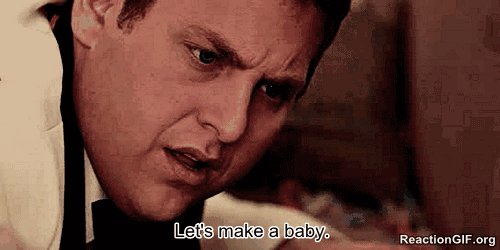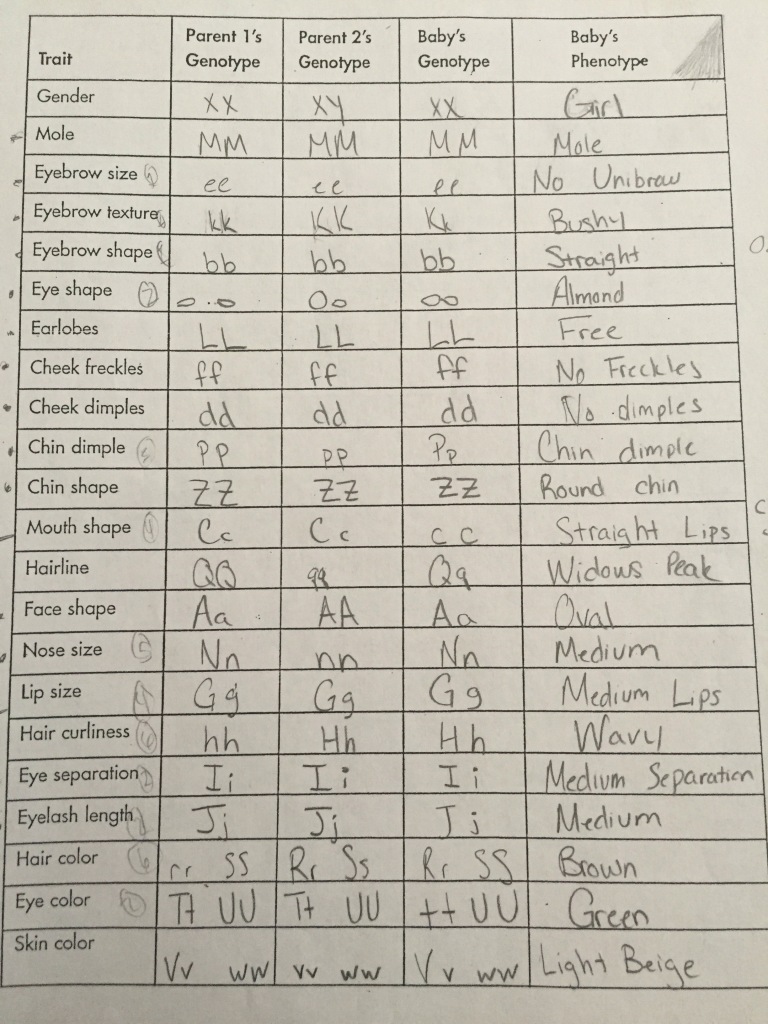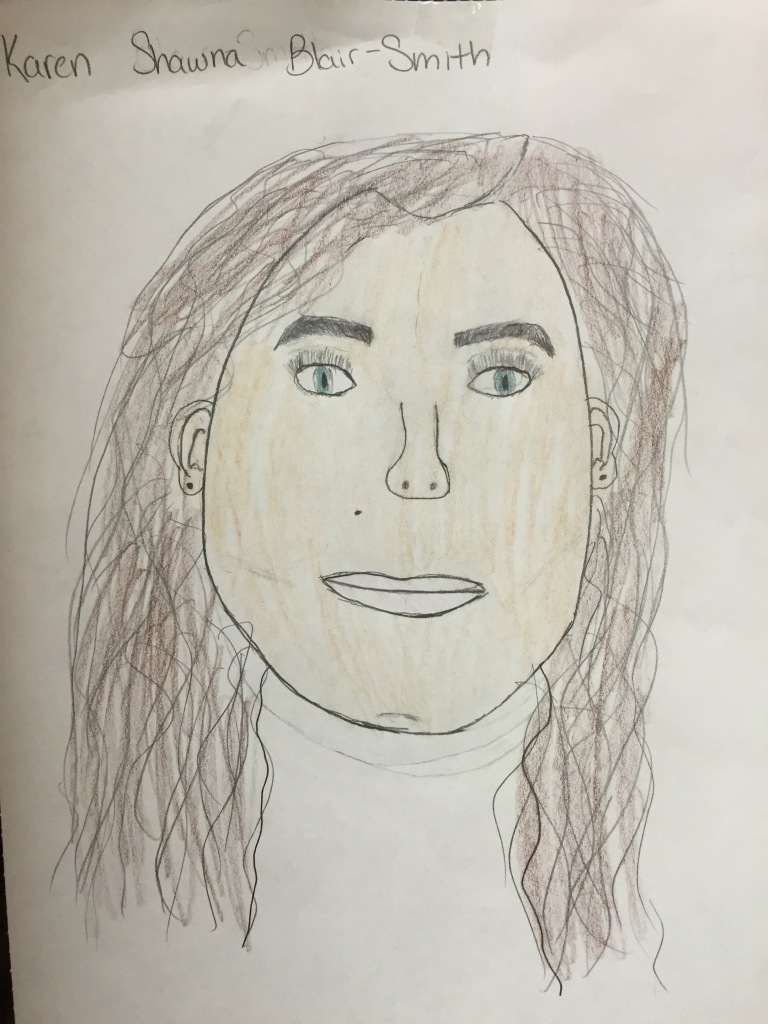
Okay, soooo this really isn’t as awkward as it sounds. We did make a baby, but not like how you’re thinking. Instead, the two of us (Lexie and I) combined our traits to see what our child were to look like if we hypothetically had one. Even though, that’s actually impossible.
To do this, we took our very visible facial traits and put our genotypes into a chart. But, which trait of our genotype would us two parents pass on? A coin flip decided.
Below is a chart that showed the genotypes of our baby:

But, the project didn’t stop here. We took it a step further and toyed around with the phenotypes of our newly made baby. How? We combined all these genotype traits into a physically visible baby. We drew our baby. Now, you should know that I CANNOT draw. So, my child looks hideous, but here’s my baby girl: Karen Shawna Blair-Smith.

To follow up this lab, we had understanding questions below to answer.
- Define each of the following terms:
- Chromosome- A thread like structure of nucleic acid and protein in the the nucleus of the cell that carries the genetic information to make genes
- Codominant- Phenotype of hetrozygote is different from the homozygotes
- Diploid- nucleus that contains two complete sets of chromosomes
- Haploid- nucleus having a single set of unpaired chromosomes
- Meiosis- cell division that produces four daughter cell and is how we as humans reproduce
- Multigenic- controlled by several genes
- Recombination- the rearrangement of genetic material
- What was the probability that you and your partner would produce a boy? A girl? Explain.
- There’s a 50/50 chance that the child would be either a boy or a girl. This is due to the X and Y chromosomes of the two parents. The mother would pass down the X chromosome definitely due to her XX make up. From there, it depended what the father would pass down, X or Y. Passing an X would create and XX chromosome make up resulting in a girl. Whereas, passing down the Y would create a XY make up, creating a boy. The chance can go either/or. 50/50.
- Explain how it is possible for your baby to have a visible trait that neither you or your partner have.
- This is determined by the recessive trait. A recessive trait is a hidden trait that doesn’t show because it is dominated by a more strong trait. In a heterogeneous genotype, the recessive gene is the little letter. A baby might show the recessive trait if both the parents have the heterogeneous genotype for the trait. When the two recessive traits are combined, they make a homogeneous combination with two little letters and then that also becomes the phenotype of the child.
- If you and your partner repeated this exercise, do you think the baby would look the same as the one you produced already? Explain.
- I do not think the baby would look the same due to the coin flip. Every time we had to flip the coin, the possibility could have gone a different way. This could have/ haven’t happened multiple times. It’s is like real life. There is a 50/50 chance for every trait to create a different trait or combination.